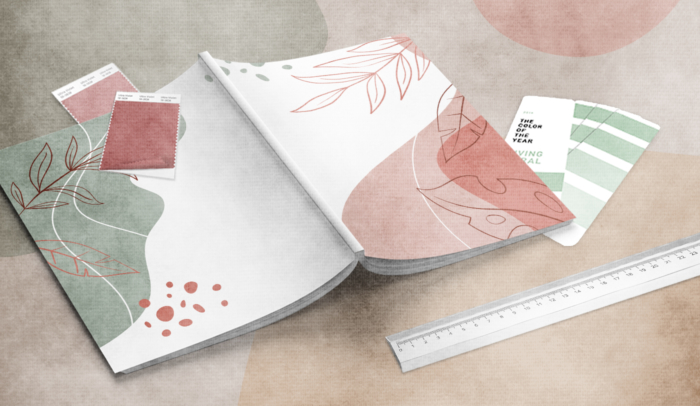Don’t Have Time Right Now?
I could write an entire book just on book covers. It’s a deeply interesting subject with a wealth of both art and data behind it…but I won’t do that to you, because you probably don’t care.
Instead, I’m going to make this as simple as possible for you to get your book cover right.
This chapter will walk you through what you need to know about book covers, why you need a book cover designer, how to find a good one, how to work with them to ensure they create the cover you want, and how to make sure you have the right cover when the process is done.
What You Need to Know About Book Covers
What to Do Before You Hire a Book Cover Designer
How Do You Find a Book Cover Designer?
How Do You Work With Your Book Cover Designer?
How Can You Check If You Have a Good Book Cover?
What You Need to Know About Book Covers
There are three big principles you need to know:
1. Your book will be judged by its cover (and that’s good)
We all know the saying, “Don’t judge a book by its cover.” But that’s not the reality of life, is it?
Everyone judges books by their covers.
In fact, we almost cannot biologically stop ourselves. Humans are visual creatures. We see our way through the world, and vision is our defining sense. Humans can be immediately reached, engaged, and moved by color and shape because these images enter the brain literally at light speed. This is the power of design.
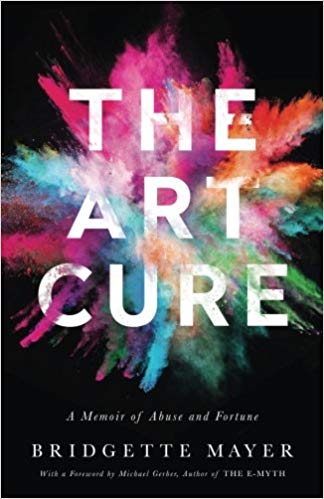
Here’s the thing: it’s good news that people judge your book by the cover. Otherwise, they might not make any judgment at all, and no judgment means they aren’t buying or reading it.
Can you imagine walking through a bookstore that had covers with no information on it other than the title? Or browsing Amazon and looking only at book titles? That would make book-buying decisions much more difficult.
People will judge your book cover and use that judgment to evaluate whether they want to buy it. This is a chance to win a reader, and reach the exact who needs to read your book.
2. You should not design your own book cover
When you want a bottle of beer, do you brew it yourself?
When you want a new coat, do you sew it yourself?
When you need a new bar of soap, do you make it yourself?
No. You buy those things from people who are experts at making them.
Book covers are no different. You should not design your book cover yourself. You should have your book cover designed by a professional to get a professional cover.
This is for the same reason that most people don’t make homebrewed beer even though it’s not terribly complicated, and why no one wears homemade clothes, even though they’re easy to make—they’re awful when compared to the professional alternatives.
The only real difference between beer and coats, and book covers is that some people think they can design their own book covers, even if they really can’t.
For some reason I can’t understand, many authors think they are also designers. I don’t know if it’s that design software is fun to use, or that great design has a simplicity to it that belies its difficulty, but let me be very clear about something:
Unless you are a multi-year publication designer with 20+ titles in your portfolio, you should not be designing your own cover.
3. There are objectively good and bad book covers
Book cover design is not completely subjective. There are good and bad book covers, and a good designer can clearly tell you the difference between them.
This is because a book cover is a piece of art with a specific purpose:
Book covers exist to give visual form to written content.
A great cover makes someone in your intended audience say “I need to read that,” by showing them why the book matters to them in a way they can immediately grasp (or at least raising their interest enough to want to learn more). It should help your audience realize that they should be reading your book.
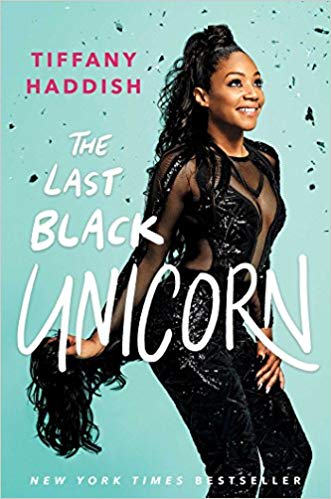
Another way to think about it is framed by Chip Kidd, a famous book cover designer, who said that “a book cover is a distillation of the content, almost like what your book would look like as a haiku.”
That being said, a good book cover is not just an expression of the idea behind a book, it’s the way the audience first engages that idea.
It’s marketing. And that is how you measure an objectively good book cover:
A good book shows what’s in the book, and makes the audience interested in reading it.
What to Do Before You Hire a Book Cover Designer
Now you understand what purpose a cover serves and why a professional book cover is important, you’re ready to find a good book cover designer and hire them, right?
Not so fast.
The main problem book designers have with authors is poor communication. The author has no idea what they want or has vague, ambiguous cover ideas, and the two never get on the same page.
You can avoid this problem by doing some work prior to finding a book cover designer. Not only will this result in a better cover, but it can also save you a lot of money.
1. Look at lots of book covers, both in your field and out
The first thing to do is get an idea of what other books in your field are like, and maybe get some ideas from them.
Go to Amazon books and search in the category your book falls into. Search Pinterest for artsier titles if you’d like. If you want a classic, look to Bookcoverarchive.com for the best, most avant-garde titles.
Once you spend some time looking at a lot of book covers in your genre, you’ll be shocked at how repetitive they are. That’s common.
Don’t feel bad about using some of these tropes—they exist for a reason, and they will help you, actually. It is a good thing for people to be able to identify your book as being in the genre you want to be in.
It’s also important to look at books in lots of other fields to get ideas as well. Just because your book is about psychology doesn’t mean you have to use the same tropes as all psychology books; you can use some ideas from business or self-help books, or even novels.
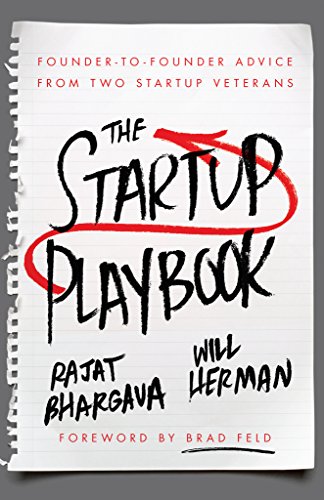
Also, don’t feel bad about taking inspiration from your favorite books. Great art and design don’t magically appear in a vacuum. They have to be born of some inspiration point.
2. Narrow down to a few covers that have elements of what you want
As you look through the hundreds of covers, save a few examples of the ones you really like, or ones that have elements that you really like. The reason you’re doing this should be obvious: you need to show your designer what you like (not just try to describe it).
Save the links or images and send them to your designer. A picture is worth a thousand words, which is worth massive savings in your time and money. Designers see the world visually, and the best way to get a point across to them is to show them.
At Scribe, we have a document with 10 very different covers that we walk authors through to get a sense for their taste, doing this is common practice.
3. Pick brands or other pieces of art that capture your aesthetic
Don’t just look at covers. Pull in logos, websites, art, photos, or pretty much any image you can find that’s in some way similar to what you want on your book cover.
Remember that design is everywhere. Do you love the clean, light simplicity of the Apple logo? Or are your more into the zany black and green playfulness of Android?
You are essentially creating a collage (some people call this a mood board) of visual inspiration and ideas that can help your designer understand how to best get your book’s message across to your audience.
How Do You Find a Book Cover Designer?
There are many places to hire book cover designers. We’re going to break them down by price point, and as always, priciest is best. You get what you pay for. Designers who are able to charge 2k and up for the services, do so because their books SELL.
1. Independent Designer ($750-$2000+):
The highest quality option is always to hire an independent book cover designer. Many of the best book cover designers in the world, who work regularly with major publishing houses, are available to hire on a freelance basis.
There are a few ways to find these people. One of the best options is Reedsy, a freelance marketplace designed specifically for authors. The other option is to go to more general design sites, like Behance or Dribbble, and search for book designers there. They can be a bit slow to respond and difficult to get in touch with, but the quality there is outstanding as well.
But the best method is to look inside your favorite books, and see who designed the cover. Then google their name–more than half the time, you’ll find their design site and can contact them directly.
2. 99Designs ($300-600+):
99Designs (and similar sites like Crowdspring) can work sometimes, at least to get decent designs.
On 99Designs, you post a detailed brief with all the technical parameters and visual examples you pulled, and then their designers read this information and post their work. Dozens of designers take your brief, design a cover, and post it for your approval. You then have the option to choose the winning designer to take the cover from, or, if you don’t like any of the designs, get a full refund with no hassle.
99Designs is great as a first option to test if a great cover would be worth the money to you. That way you can see the designs, get some ideas, and hopefully find a great cover. But, if not, no harm, and you can go back to the drawing board with the other options.
We’d recommend doing the Silver contest (which costs $499). The lower end contests really repel the better designers on the site, and the higher-end ones don’t seem to garner much higher quality (and actually tend to get fewer submissions).
3. Upwork ($50-500+):
The next step up the quality ladder would be a freelance network like Upwork. The overall quality of Upwork is not high, but there are some quality designers hidden on there. Expect to take your time to find the right person on one of these sites, but you will be able to find them. Job ads typically get dozens if not hundreds of responses, and designers typically link a portfolio of past work.
Screen out anyone with more than a few negative reviews, and then focus 100% of your screening time on judging their portfolios. Do a side by side comparison of the covers you liked when you did your research on Amazon. Do they appear to be of similar quality? If you can’t tell, ask a friend who understands the basics of design.
Portfolios are the only thing that gives you a real picture of the quality of their work. If you like their past work, you’ll probably like their future work. Everything else is just marketing.
4. Fiverr ($5-50):
Fiverr is a marketplace of services available for $5 or so. There are a ton of book cover designers on Fiverr, but almost all of them are absolute garbage.
I’ve never used Fiverr for cover design, but friends have been able to find a couple of designers who are good.
What happens is that a new designer will do a great job, get a ton of 5-star reviews, and then disappear to another site where they can charge more than $5 for their work. Think of it this way. If someone has any design talent, why would they work for $5 a cover?
5. DIY ($0):
If you do this, you are a fool, and you will get precisely what you pay for.
How Do You Work With Your Book Cover Designer?
Once you’ve picked a designer and negotiated price, then comes a discussion of your cover idea. Here is where all that work you did before comes into play.
1. Schedule the first call for phone or video
Schedule your first call to be phone or video. Email is very hard to effectively communicate with strangers, especially about abstract concepts like design.
2. Send them the covers and logos you liked before the call
Prior to the call, send them a cover design brief. This should include all the book covers you like, all the logos and other pictures you like, and everything else you assembled. Do this at least a day ahead of time, designers like to have time to digest images and ideas.
3. Explain your thinking
Once on the call, walk them through your thinking:
- Start with explaining who is your target reader.
- Then, explain what you like and dislike about each cover.
- Talk about what you want your cover to feel like.
- Discuss the signals you are trying to send to your audience.
- If you can, discuss the emotions you want your reader to feel when they see the cover.
The more you explain all of your thinking to the cover designer, the better they will do.
4. Ask for at least 3 mock-ups
This should be standard for good book cover designers. They will come up with an array of ideas and show you at least 3 different ones.
5. Give constructive notes on the mock-ups
Once you get the mock-ups back, if one jumps out at you, great. Give specific notes and feedback to get it where you want, and then you’re done.
If you aren’t happy with any of the covers, that’s OK too. Get back on the phone with the designer, and–while being polite–be as specific as possible about what you would like different.
This is not about getting angry or frustrated with the cover designer. They aren’t in your head, and if their mock-ups did not fit your vision, that’s OK. Just be clearer and more methodical in your description, and you’ll get there.
Remember this: your cover designer is a human who has feelings, but also a professional that wants to do a great job. You are both on the same team. You can be firm, but also polite and understanding.
How Can You Check If You Have a Good Book Cover?
Once you have a cover, or you think you have one, here are the questions to ask to check if it’s working for you:
1. Does it stand out?
This is crucial. Look at it from all angles; print it out and put it across the room. Think of every possible way someone will look at it–on a screen, in a bookstore, etc–and make sure it stands out that way. Can you read the title? Is the image clear?
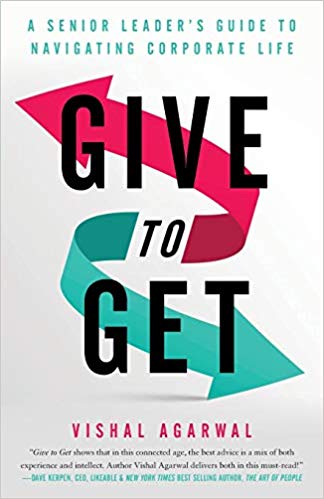
Check it as a thumbnail too. Does your cover look good when you shrink it down to a tiny thumbnail? That’s how most of your readers will see it, as a small image on Amazon.
2. Does it have a clear focus?
Establish a principal focus for the cover—nothing is more important than this one thing. Your book is about something, and the cover ought to reflect that one idea clearly. You must have one element that takes control, that commands the overwhelming majority of attention, of space, of emphasis on the cover.
Don’t fall into the trap of loading up your cover with too many elements, 3 or 4 photos, illustrations, maps, “floating” ticket stubs. This just confuses people, and confused people become repelled.
And don’t fall into the trap of believing your cover is a billboard, and every inch of space on it is real estate that needs to be filled up with the biggest possible words. The type needs to sit within the appropriate amount of emptiness in order to be readable. What is NOT on your cover is just as important as what IS on it. A quality designer will intimately know the appropriate font size for subtitles, blurbs, and author titles. Asking for them to be bigger, is merely going to drain the impact from your design.
3. Does it indicate what the book is and who the book is for?
Not only does your book stand out, but at a glance, your audience ought to know:
- The general genre of your book
- The general subject matter or focus, and
- Some idea of the tone or position of the book
A truly great book is one that captures the book inside in some fundamental and perhaps unforeseen way.
At the same time, don’t fall into the trap of feeling it has to show the content of the book or show an element or scene from the book (no one will know that is correct until after reading the book anyway).
4. Did you explore too many options?
Some authors spend far too much time trying to find the perfect cover. Usually, this is because it’s a way to work their anxieties about publishing out during the cover design process.
It’s the major creative part of the publishing journey, and many people are nervous about what will happen when it ends. They force the hand of their designer through round after round of revisions, thinking they are bettering their cover.
In actuality, they are both running from their fears and ruining their cover design. Ask your cover designer when they believe your cover is done because they are the only impartial source for this knowledge.
5. Did you make the brave choice?
We see this happen all the time: we’ll give an author three mock-ups, and there will almost always be a non-optimal choice, a solid choice, and a great choice.
The great choice will almost always require the author to be brave in selecting it. It will have some angle or position that is novel in your field, or make a statement that is controversial, or just be different in a way that will make you just a little uncomfortable.
I’d say that only about 25% of authors pick the brave choice.
You don’t have to make the brave choice, but it’s almost always the best one (if there is a brave choice available). Be aware if this happens to you.
The solid choice is not bad, but it means your book won’t stand out or get the attention it deserves. The brave choice means it will.
If you are unsure how to define brave, here is a way to think about it:
The brave choice says what everyone is thinking, but not saying out loud. The brave cover is the one that people will remember. You’ve worked too hard on writing your book to cover it in mediocrity because some stranger on Facebook doesn’t like blue.
Be proud of your achievement. Be bold. Make your mark.
6. DO NOT POST on social media to get feedback
The best way to ensure you choose the mediocre (or even bad) cover is to poll people on social media.
Your average potential reader–when asked which cover they like–is going to channel their inner mob mentality and respond to the title that is most like what already saturates your market. They pick the most common design, because to them, common means fitting in. True, fitting in is better than looking a mess, but the cover game, first and foremost, is about BEING MEMORABLE.
Beyond that, a good book cover is not designed to appeal to everyone. It’s designed to appeal to the target audience of the book. Your 2500 Facebook friends include people you knew in high school and in-laws and that guy you met at a conference three years ago. They are not the target audience for your book.


